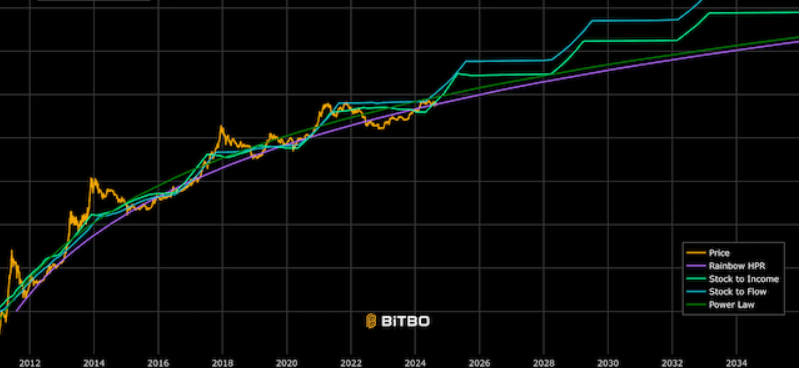Bitcoin Price Trends: What Influences Its Value and Future Predictions
Bitcoin, the first and most popular cryptocurrency, has experienced remarkable volatility since its inception. From its humble beginnings to becoming a globally recognized digital asset, the Bitcoin price has fluctuated dramatically. As more individuals and institutions enter the market, understanding the factors influencing Bitcoin price is crucial for investors and enthusiasts alike. This article explores the key elements affecting Bitcoin’s price trends, as well as expert predictions for its future trajectory.
Understanding Bitcoin and Its Price Dynamics
Before diving into the specifics of what influences Bitcoin price trends, it’s essential to understand how Bitcoin works and why its value is so volatile. Bitcoin is a decentralized digital currency, created through a process known as “mining.” Unlike traditional currencies controlled by central banks, Bitcoin operates on a peer-to-peer network using blockchain technology. The lack of centralized control and the fixed supply of 21 million bitcoins create unique economic dynamics that drive its price.
Factors That Influence Bitcoin Price Trends
The price of Bitcoin is influenced by a wide array of factors, ranging from market demand to regulatory changes. Below are some of the primary drivers:
1. Market Demand and Adoption
Like any asset, the value of Bitcoin is heavily influenced by supply and demand. When more people and institutions adopt Bitcoin, its demand rises, pushing the Bitcoin price higher. Positive developments such as companies integrating Bitcoin into their payment systems or governments exploring digital currencies can boost confidence in Bitcoin and drive its price up.
2. Market Speculation
Bitcoin is highly speculative, with many investors purchasing the cryptocurrency based on future price expectations. This speculative nature often leads to sharp price fluctuations. News stories, rumors, or anticipated developments (such as the launch of Bitcoin ETFs) can significantly impact investor behavior, which in turn affects Bitcoin price trends.
3. Regulatory Environment
Government regulations play a crucial role in shaping Bitcoin’s price dynamics. Countries with favorable regulations towards cryptocurrencies often see increased investments and a rise in Bitcoin adoption, driving its price up. Conversely, countries that impose heavy restrictions or bans on Bitcoin can have a negative impact on its price.
For example, China’s crackdown on Bitcoin mining in 2021 caused a sharp drop in the Bitcoin price, demonstrating how regulatory decisions can dramatically impact the market.
4. Media Coverage and Public Perception
Media outlets and public figures have a profound impact on Bitcoin’s price. Positive media coverage can encourage new investors to enter the market, while negative reports can create fear, uncertainty, and doubt (FUD), leading to a sell-off. The influence of high-profile personalities such as Elon Musk, who has both praised and criticized Bitcoin, showcases the significant role of public perception in determining its price.
5. Institutional Investment
Institutional investment is a growing factor in Bitcoin’s price trends. When large institutions, such as hedge funds, pension funds, or even publicly traded companies, decide to purchase Bitcoin, it creates increased demand and raises the price. Notable examples include MicroStrategy’s Bitcoin purchases or Tesla’s initial investment in Bitcoin, which had a clear impact on the market.
6. Economic Factors
Broader economic conditions, such as inflation rates, interest rates, and the performance of traditional financial markets, also influence the Bitcoin price. During times of economic uncertainty, Bitcoin is often seen as a “safe haven” asset, similar to gold. This perception can drive demand, especially when fiat currencies lose value due to inflation.
7. Technological Developments
Bitcoin’s underlying technology, particularly its blockchain, plays a critical role in its long-term viability. Enhancements to the Bitcoin network, such as the implementation of the Lightning Network for faster transactions, can have a positive effect on Bitcoin’s utility and price. The community’s ability to address scalability and transaction costs will continue to influence its adoption and, by extension, its value.
Historical Trends in Bitcoin’s Price
Bitcoin has gone through multiple price cycles, each marked by dramatic rises and falls. Some of the key events in Bitcoin’s price history include:
- 2013-2014: Bitcoin first crossed the $1,000 mark but quickly fell back, establishing its reputation for extreme volatility.
- 2017: Bitcoin experienced an explosive rise, peaking at nearly $20,000 by the end of the year. This was driven by a surge in retail investor interest.
- 2020-2021: Bitcoin reached new all-time highs, driven by institutional interest and growing recognition as a hedge against inflation. The price surged to over $60,000, only to experience a sharp correction later in 2021.
These cycles of boom and bust have led many analysts to compare Bitcoin’s price trends to those of speculative bubbles, though its long-term growth remains undeniable.
Future Predictions for Bitcoin Price
While predicting the future of Bitcoin’s price is challenging due to its volatility, several trends and expert opinions suggest potential price movements:
1. Increased Institutional Adoption
The growing trend of institutional adoption is likely to continue driving up the Bitcoin price. As more companies recognize Bitcoin as a store of value, its price could experience steady growth. If financial institutions start offering Bitcoin investment products on a larger scale, it could pave the way for increased market liquidity and stability.
2. Global Economic Factors and Inflation
With increasing concerns over inflation and currency devaluation in many economies, Bitcoin may be seen as a hedge against the traditional financial system. This could lead to greater demand, especially as more countries struggle with economic instability.
3. Technological Advancements and Bitcoin’s Role in the Economy
Technological improvements could make Bitcoin more efficient and scalable. Additionally, Bitcoin’s increasing acceptance in global financial systems might push its value upward. If Bitcoin is used as a global reserve currency or as a widely accepted payment method, its price could increase significantly.
4. Volatility and Speculation
Despite the long-term positive outlook for Bitcoin, its volatility will likely remain a significant characteristic. Investors should be prepared for price swings, with speculative trading continuing to influence short-term movements. As a result, Bitcoin’s price might experience both upward and downward fluctuations, reflecting ongoing market sentiment.
Bitcoin Price FAQs
1. What is the current Bitcoin price trend?
The Bitcoin price trend varies constantly, but currently, Bitcoin has been experiencing growth due to institutional investments and broader adoption. However, market volatility continues to cause short-term fluctuations.
2. Why is Bitcoin’s price so volatile?
Bitcoin’s price is volatile due to several factors, including market speculation, regulatory changes, and media influence. As a relatively new asset class, Bitcoin’s market is still maturing, making it prone to large price swings.
3. How does government regulation affect Bitcoin’s price?
Government regulations can have a profound impact on Bitcoin’s price. Positive regulations, like those in El Salvador, tend to boost the price, while restrictive measures, such as China’s Bitcoin mining ban, can cause declines.
4. Can Bitcoin reach $100,000?
Many analysts believe that Bitcoin could reach or exceed $100,000 in the long term, especially if institutional adoption continues to rise and if Bitcoin becomes widely recognized as a store of value.
5. How do technological developments impact Bitcoin’s price?
Advancements in Bitcoin’s technology, such as the Lightning Network, improve transaction efficiency and scalability, which can lead to increased adoption and higher demand, thus positively influencing the Bitcoin price.
6. What is the role of media in Bitcoin’s price?
Media coverage plays a significant role in shaping Bitcoin’s price. Positive media attention can spur interest and increase demand, while negative press can create fear and lead to sell-offs.
Conclusion
Bitcoin remains one of the most dynamic assets in the world, with its price influenced by numerous factors, including market demand, speculation, regulations, and technological advancements. Although the future of Bitcoin is uncertain, its growing acceptance, institutional adoption, and potential as a hedge against inflation suggest that the Bitcoin price may continue to rise over the long term. However, investors must remain aware of its volatility and market risks.


